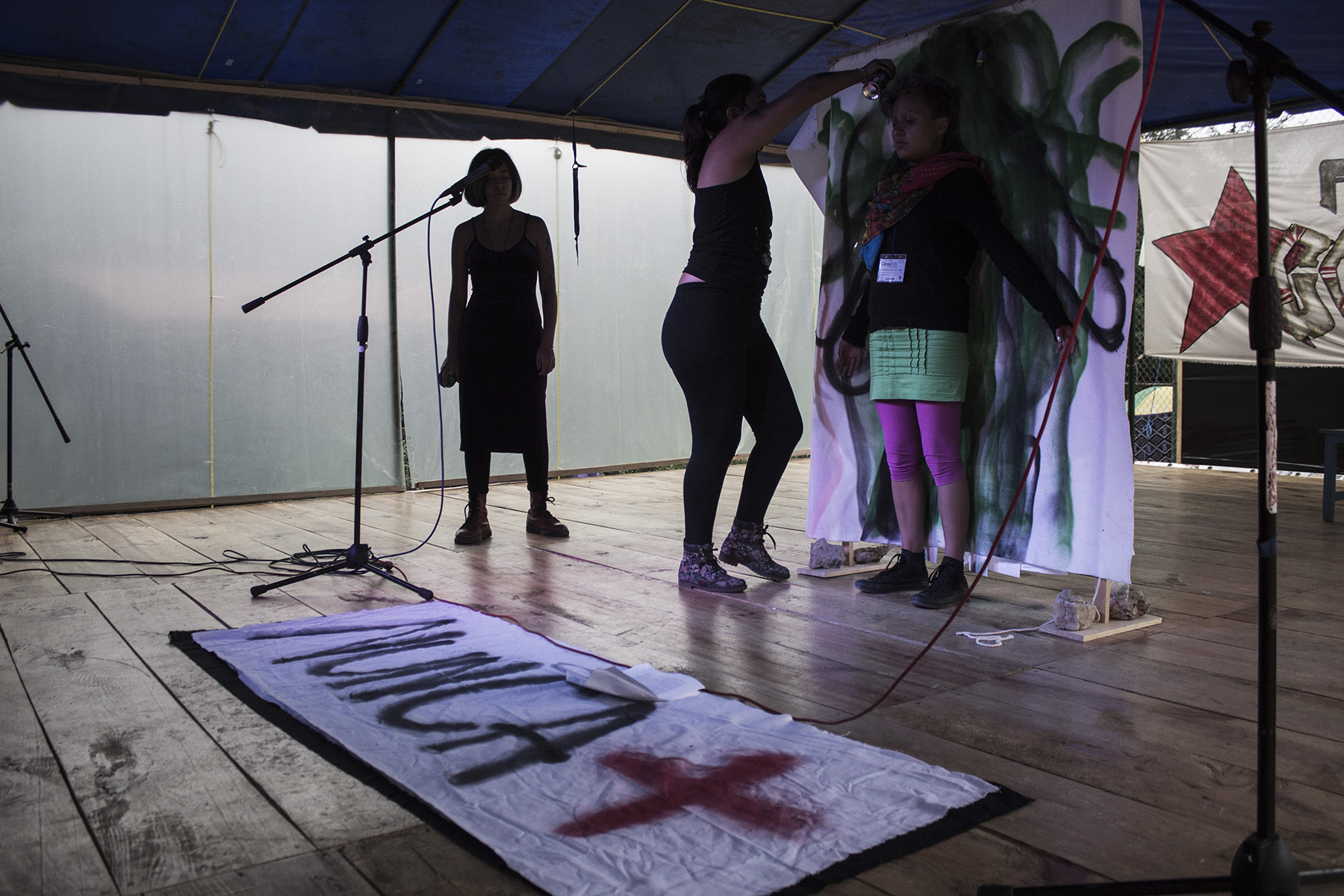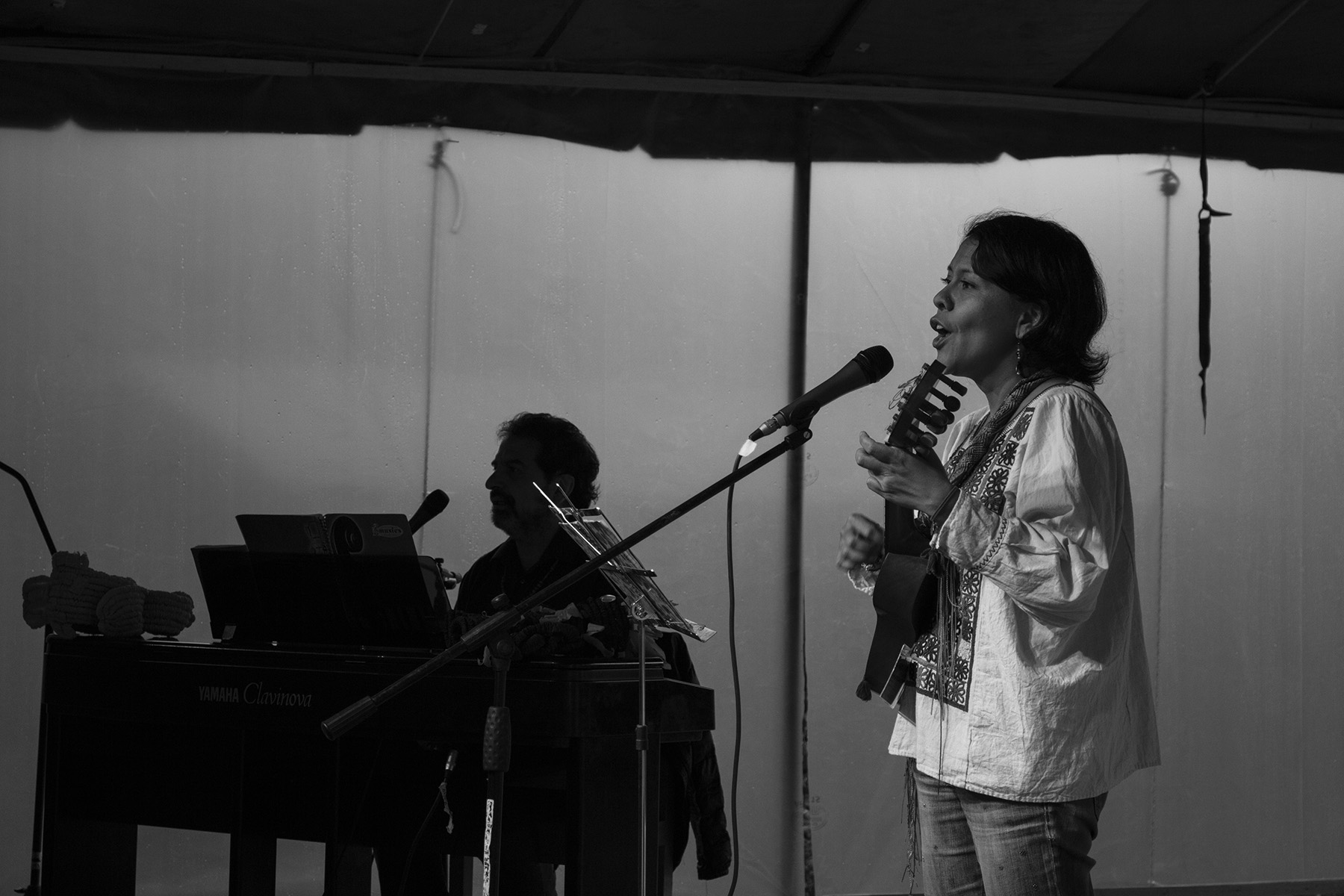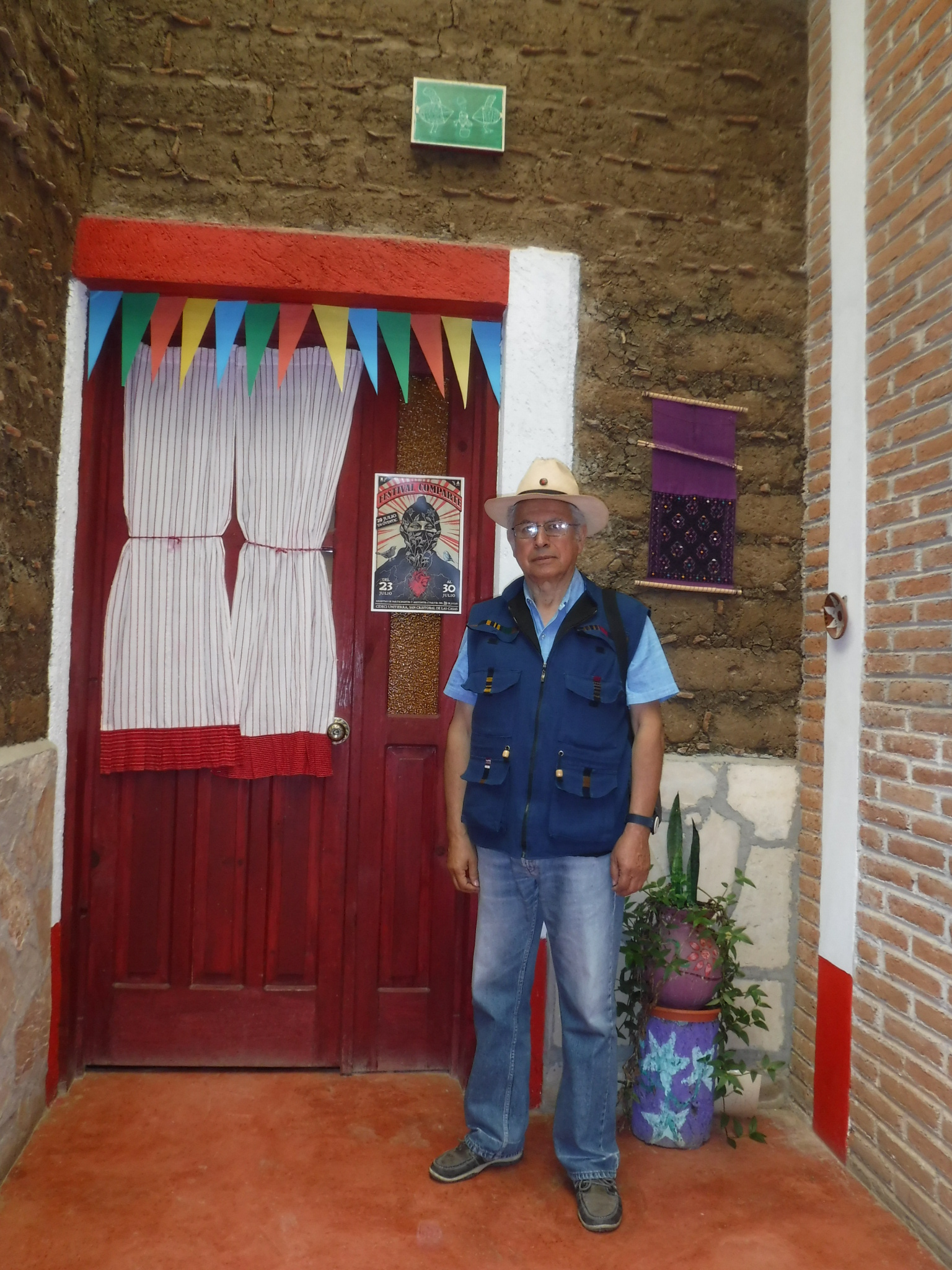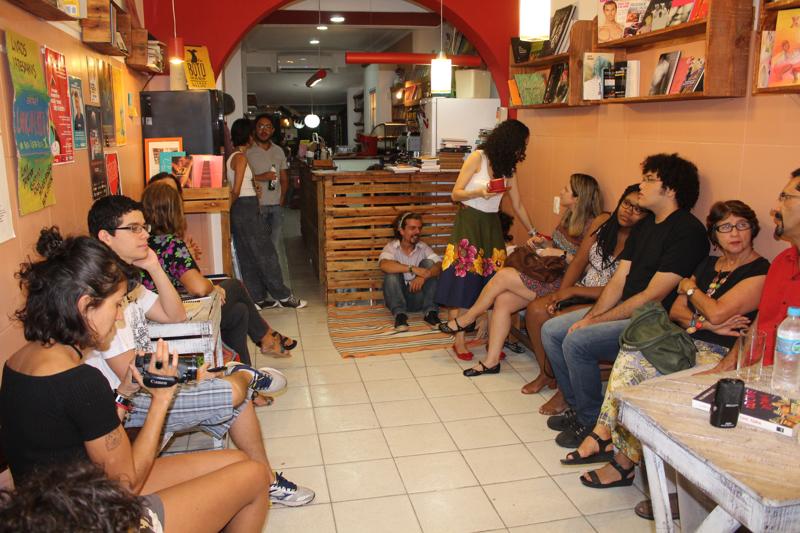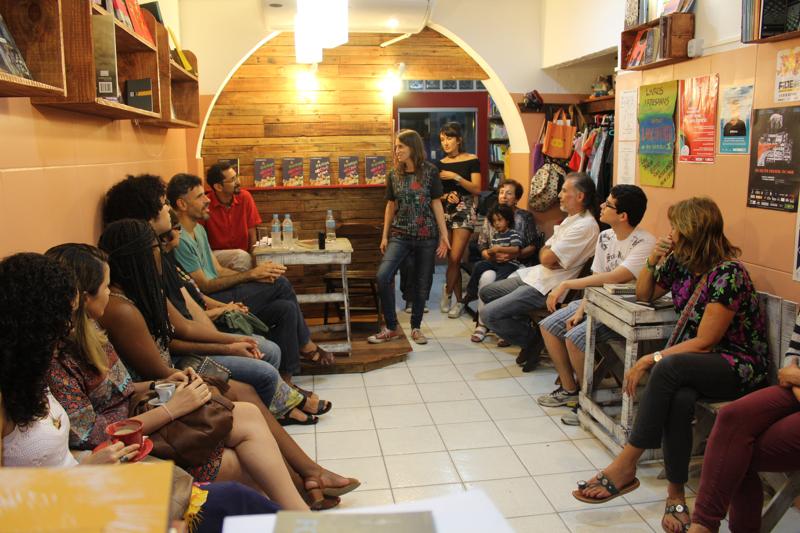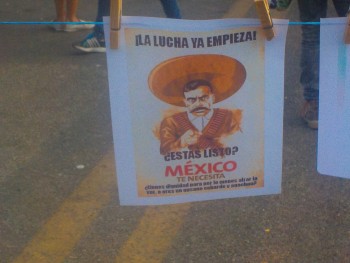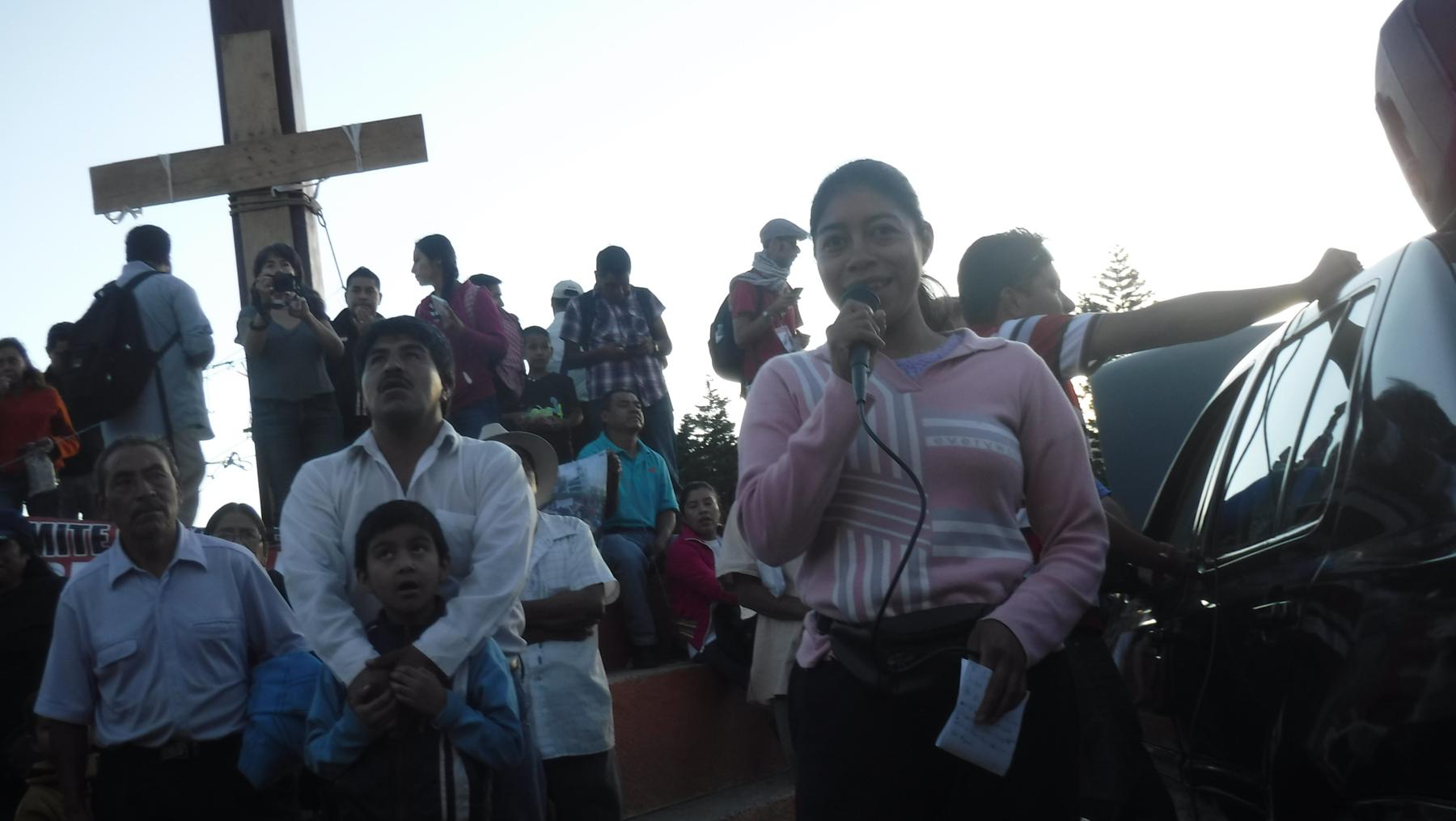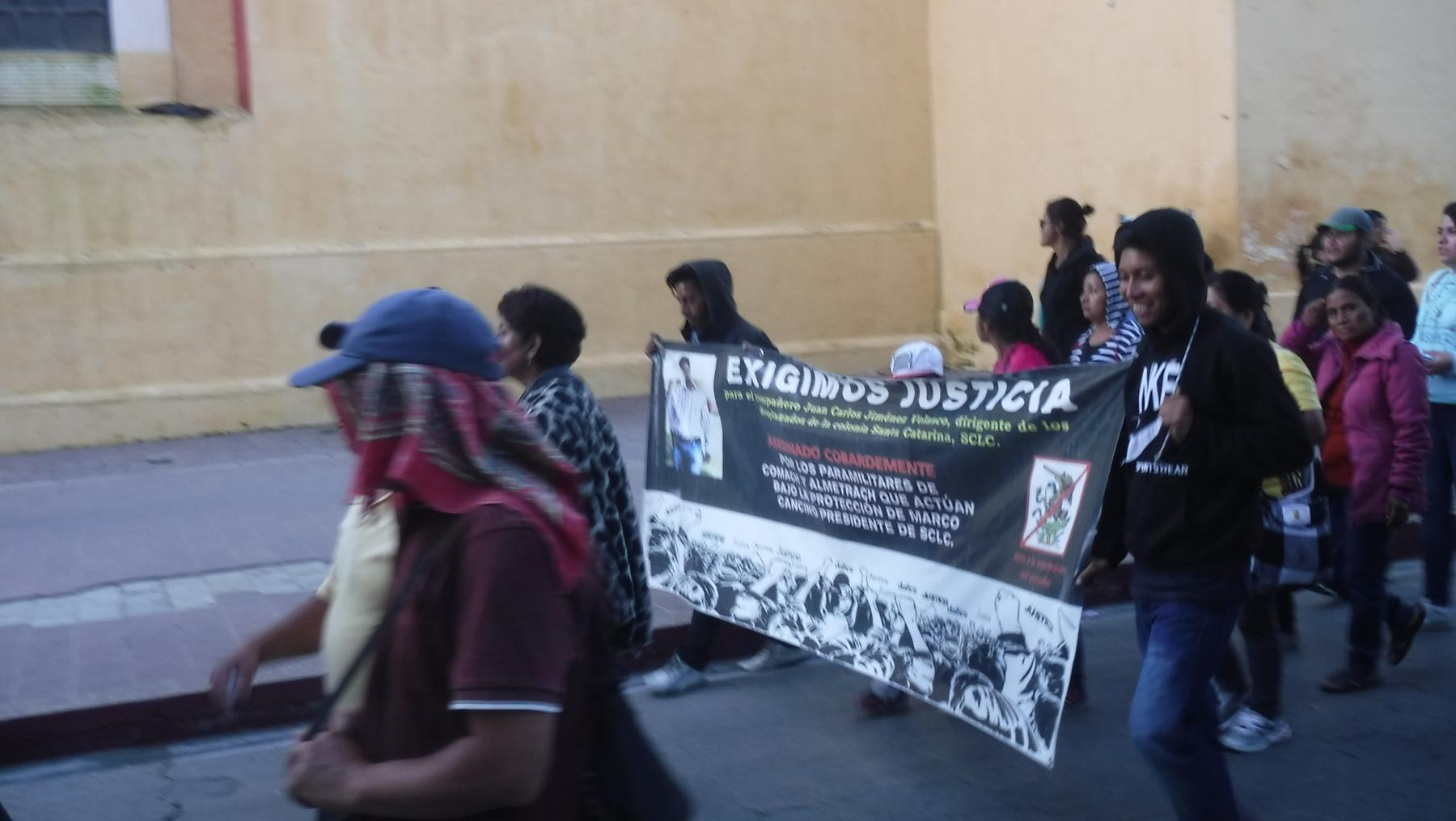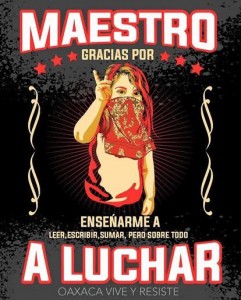
Mundo
Día 2 – CompARTE por la humanidad – Cideci
Festival CompARTE por la humanidad
24 de julio de 2016
Cideci / Universidad de la Tierra Chiapas
Domingo 24 de julio.- Jovel-San Cristóbal de Las Casas, Chiapas. Durante este segundo día del Festival #CompArte por la Humanidad continuaron las comparticiones por parte de los y las compañeras que siguen llegando de las distintas geografías de México y el Planeta tierra. Miradas, palabras, sonidos, imágenes, silencios y trazos que dibujan con sus cuerpos irrumpen en el calendario para mostrar el diverso abanico de la resistencia hecha arte. Aquí les compartimos algunos de los trabajos presentados en esta segunda jornada en el Cideci-Unitierra Chiapas, donde el compañerismo, la fraterinidad y sororidad siguen cavando en lo profundo de nuestra Humanidad, donde la rabia compartida se torna esperanza.
El Colectivo Utopía de Michoacán presentó la instalación “Vivos:43 siluetas” para recordar que los 43 normalistas están entre nosotrxs:
(Descarga aquí)Desde el centro de México, Ensamble Comics compartió el comic “Las aventuras del brujo Cristóbal” y charló sobre las leyendas que nos rescatan, la autogestión cultural, el arte y la resistencia:
(Descarga aquí)En 18 segundos, el colectivo La Necia del Distrito Federal abordó temáticas como la falta de memoria, la violencia hacia las mujeres, el desplazamiento forzado y la desaparicion de los normalistas de Ayotzinapa. El Arte, dijeron, debe ser una pregunta y otro modo de compartir y luchar:
(Descarga aquí)Desde Morelos, el grupo Los Tecomates charló sobre la alegría de zapatear, comunicar, participar y decidir. Además compartió, entre otros, el son “Los Piojos”:
(Descarga aquí) (Descarga aquí)Desde Ensenada, en la otra esquina de México, Edgar Huerta, mejor conocido como Disidente, mezcló hip-hop y reggae para llamar a conectar y combinar lo social, lo personal y lo espiritual. Como muestra de su claridad, las pistas “Fuerza de Guerrero” y “Semilla de cambio”:
(Descarga aquí) (Descarga aquí) (Descarga aquí)Desde Santiago de Chile y la editorial Quimantú (Sol del saber), Ignacio Pardo compartió poesía ligada a la resistencia latinoamericana, tal y como muestra su texto “Ayotzinapa”:
(Descarga aquí)En el primer palomazo del salón de poesía y narrativa, Javier Andrade, médico de Pachuca, Hidalgo, compartió el cuento “El sueño” escrito desde 1982:
(Descarga aquí)Tras casi una década en la Garrucha, el colectivo la Karakola presentó la obra de teatro “El maíz transgénico” escrita de manera colectiva con lxs compas de este caracol:
(Descarga aquí)Desde el desierto de Wirikuta, Antonio Trejo (Marcos Blues) compartió una muestra de canción social de autor llamada a alimentar la congruencia y la resistencia:
(Descarga aquí) (Descarga aquí)Desde Brasil, Elenara Eiabel viajó con un par de exposiciones sobre graffiti, periodistas y libertad de expresión. En el camino destacó que el arte puede ser un arma de denuncia y que las experiencias de resistencia del pueblo mexicano demuestran que aún es posible otro tipo de humanidad:
(Descarga aquí)







